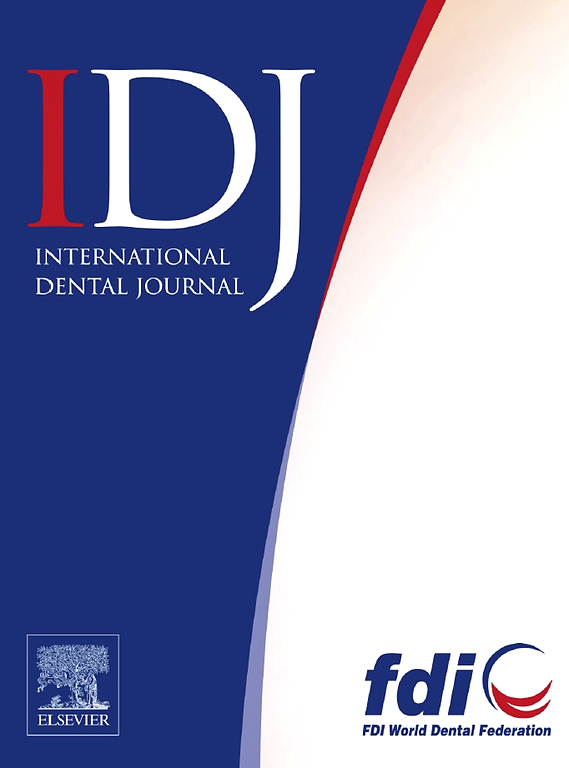Patient Reported Outcome Measures and Patient Reported Experience Measures for Dental Practice Quality Improvement Via Deliberative Stakeholder Consultation in the United Kingdom
IF 3.7
3区 医学
Q1 DENTISTRY, ORAL SURGERY & MEDICINE
引用次数: 0
Abstract
Introduction and aims
Patient feedback have potential to drive quality improvement in dental care. However, there is a lack of clarity regarding which elements of patient feedback should be used. This study aimed to select appropriate patient-reported outcome measures (PROMs) and patient-reported experience measures (PREMs) for use in audit and feedback-based quality improvement in dental practices in the UK.
Methods
A 2-phase, evidence-informed deliberative process—comprising evidence synthesis and Deliberative Stakeholder Consultations (DSCs)—was conducted. Phase 1: PROMs and PREMs candidate items were identified through systematic literature search and thematically analyzed. Phase 2: Dental patients and professionals were recruited for DSCs through purposive and snowball sampling. Inductive thematic analysis of DSC transcripts was conducted, and the final measures were agreed (5 for each dental encounter: check-up, planned treatment, and urgent care).
Results
In phase 1, 672 measures (across 8 themes such as psychological/social impacts) were identified. In phase 2, 8 dentists and 5 patients participated (March-May 2024). Stakeholder priorities were as follows. Check-up appointments: dentist’s communication skills regarding treatment options and cost, and the cleanliness of facilities. Planned treatment: effective pain management during procedures and overall satisfaction with treatment. Urgent care: management of patient fear/anxiety and pain relief following a procedure. Communication of treatment progress and provision of post-operative advice were considered important in both planned and routine treatment. Waiting times for appointments were a priority across all encounters.
Conclusion
Eleven measures (after removing duplicates) were selected for the encounters to offer meaningful potential for operationalizing quality improvement in dental practices. DSCs were also perceived as a useful method for prioritizing measures for quality improvement.
Clinical Relevance
This study is the first to identify actionable PROMs and PREMs which can be used for audit and feedback loops in dental practices. These measures will be tested in DELIVER case studies.
患者报告的结果措施和患者报告的经验措施牙科实践质量改进通过审慎利益相关者咨询在英国
引进和病人反馈有潜力推动牙科护理质量的提高。然而,对于应该使用患者反馈的哪些元素,缺乏明确的规定。本研究旨在选择适当的患者报告的结果测量(PROMs)和患者报告的经验测量(PREMs)用于审计和基于反馈的质量改进在英国的牙科实践。方法进行两阶段的循证审议过程,包括证据合成和利益相关者审议磋商(dsc)。第一阶段:通过系统的文献检索,确定PROMs和PREMs候选项目,并进行主题分析。第二阶段:通过有目的和滚雪球抽样的方式招募牙科患者和专业人员进行dsc。对DSC转录本进行归纳主题分析,并商定最终措施(每次牙科就诊5项措施:检查、计划治疗和紧急护理)。结果在第1672阶段,共确定了包括心理/社会影响在内的8个主题的措施。在第二阶段,8名牙医和5名患者参与(2024年3月至5月)。涉众的优先级如下。检查预约:牙医关于治疗方案和费用的沟通技巧,以及设施的清洁度。计划治疗:手术过程中有效的疼痛管理和整体治疗满意度。紧急护理:病人恐惧/焦虑的管理和手术后疼痛的缓解。在计划和常规治疗中,治疗进展的沟通和术后建议的提供都被认为是重要的。在所有就诊中,预约等候时间都是优先考虑的问题。结论选取了11项措施(剔除重复项后),为提高牙科诊疗质量提供了有意义的操作潜力。dsc还被认为是确定质量改进措施优先次序的有用方法。临床相关性本研究首次确定了可用于牙科实践审核和反馈循环的可操作的PROMs和PREMs。这些措施将在交付案例研究中进行测试。
本文章由计算机程序翻译,如有差异,请以英文原文为准。
求助全文
约1分钟内获得全文
求助全文
来源期刊

International dental journal
医学-牙科与口腔外科
CiteScore
4.80
自引率
6.10%
发文量
159
审稿时长
63 days
期刊介绍:
The International Dental Journal features peer-reviewed, scientific articles relevant to international oral health issues, as well as practical, informative articles aimed at clinicians.
 求助内容:
求助内容: 应助结果提醒方式:
应助结果提醒方式:


